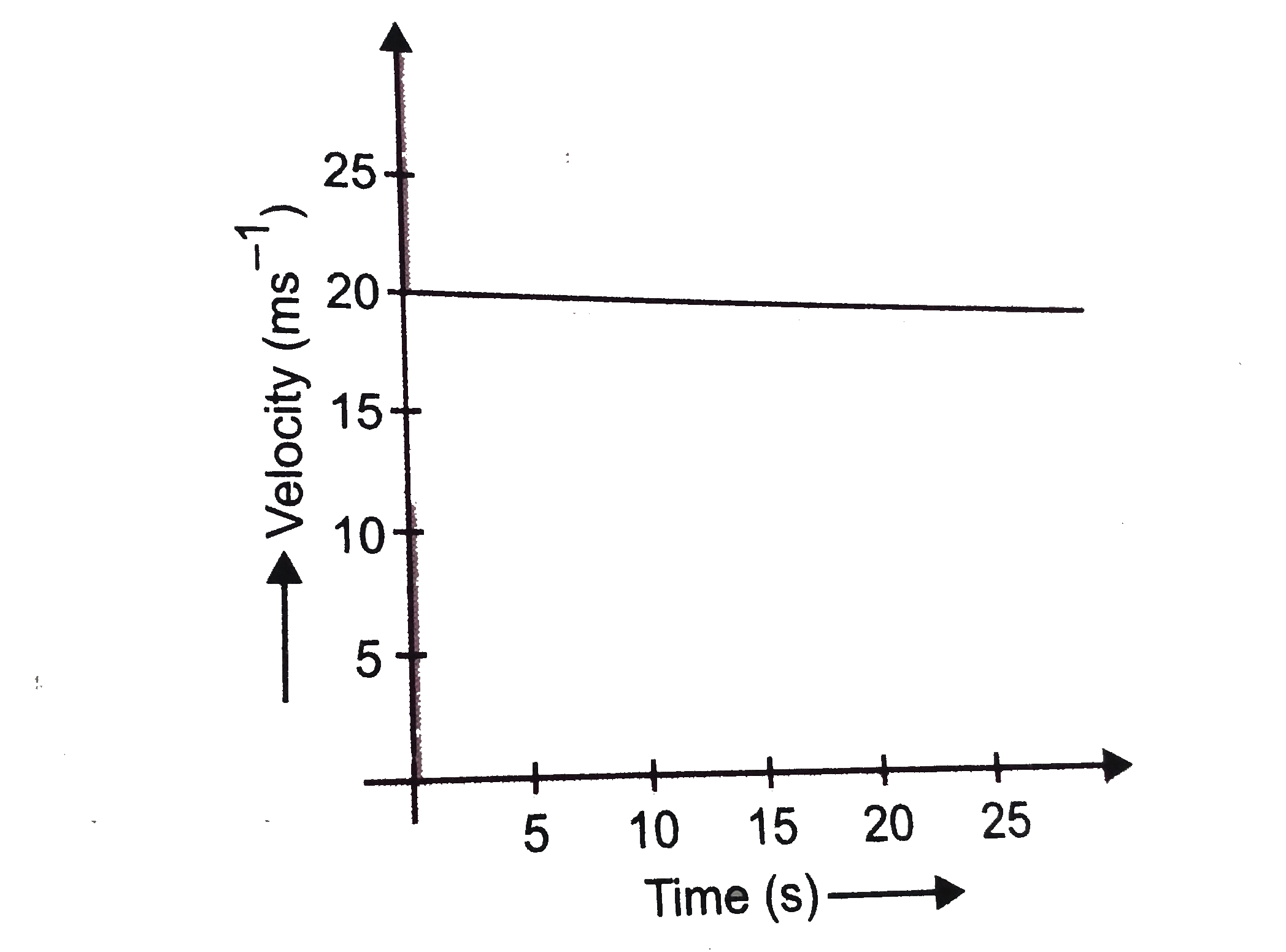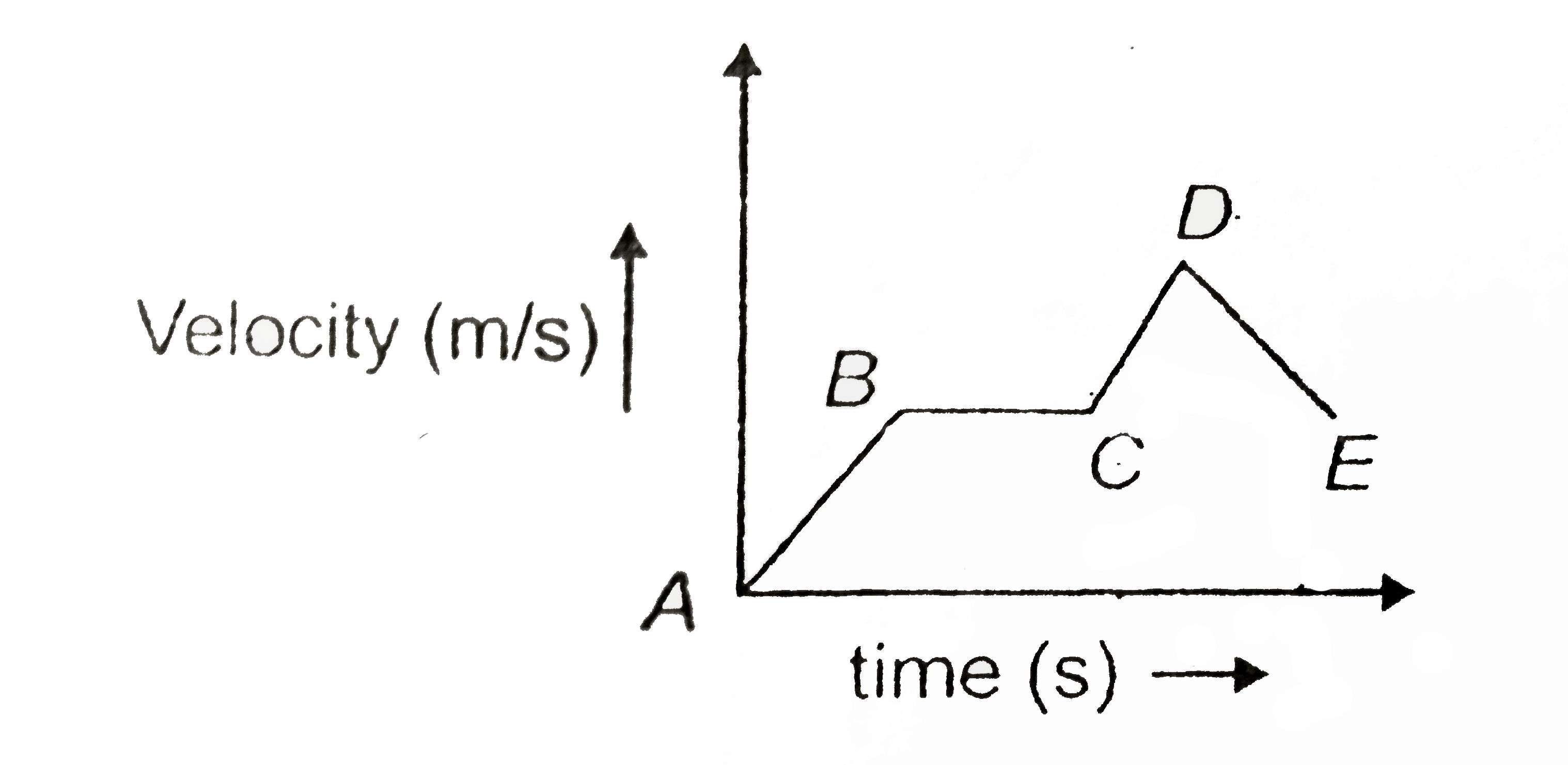The velocity-time graph shows the motion of a cyclist. Find (i) its acceleration (ii) its velocity and (iii) the distance covered by the cyclist in seconds.

(i) From the graph , it is clear that velocity is not changing with time i.e., acceleration is zero. (as a = )
(ii) Again from the graph , we can see that there is no change in the velocity with time so, velocity after 15 s will remain same as
(iii) Distance covered in 15s =
Topper's Solved these Questions
- BOOK - NCERT EXEMPLAR ENGLISHCHAPTER - MOTIONEXERCISE - Long Answer Type Questions6videos
MOTION
- BOOK - NCERT EXEMPLAR ENGLISHCHAPTER - MOTIONEXERCISE - Long Answer Type Questions6videos
MOTION
- BOOK - NCERT EXEMPLAR ENGLISHCHAPTER - GRAVITATIONEXERCISE - LONG ANSWER TYPE QUESTIONS4videos
GRAVITATION
- BOOK - NCERT EXEMPLAR ENGLISHCHAPTER - SOUNDEXERCISE - Long Answer Type Questions3videos
SOUND
Similar Questions
The slope of velocity-time graph for uniform motion of an object is
View SolutionA car acquires a velocity of 72 km h−1 In 10 s starting from rest. Calculate :
(i) the acceleration,
(ii) the average velocity, and
(iii) the distance travelled in this time.View SolutionState how the velocity-time graph can be used to find (i) the acceleration of a body, (ii) the distance travelled by the body in a given time, and (iii) the displacement of the body in a given time.
View SolutionThe initial velocity of a body moving along a straight lines is 7m/s. It has a uniform acceleration of 4m/s2 the distance covered by the body in the 5th second of its motion is-
View SolutionDraw a velocity-time graph for a body moving with an initial velocity u and uniform acceleration a. Use this graph to find the distance travelled by the body in time t.
View SolutionA car accelerates uniformly from 18km/h to 36km/h in 5 second. Calculate (i) the acceleration and (ii) the distance covered by the car in that time .
View SolutionThe velocity-time graph of an object is shown below. The part of the graph showing zero acceleration is
 View Solution
View SolutionA car of mass 1000kg accelerates uniformly from rest to a velocity of 54km/h in 5 seconds. Calculate (i) its acceleration (ii) its gain in KE (iii) average power of the engine during this period.
View SolutionThe velocity-time graph of a moving body is given below in Fig. 2.43.(i) the acceleration in parts AB, BC and CD. Find :
(ii) displacement in each part AB, BC, CD, and
(iii) total displacement.

View SolutionA particle moves on straight line according to the velocity-time graph shown in fig. Calculate -

(i) Total distance covered
(ii) Average speed
(iii) In which part of the graph the acceleration is maximum and also find its value.
(iv) RetardationView Solution

